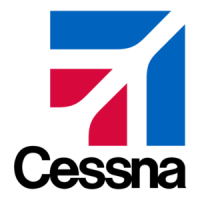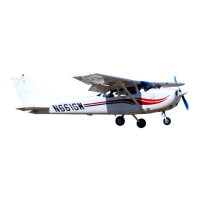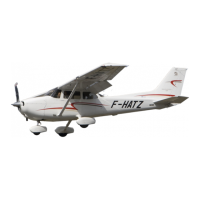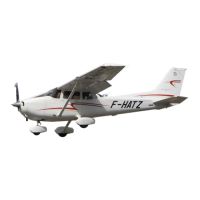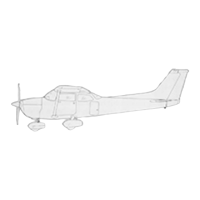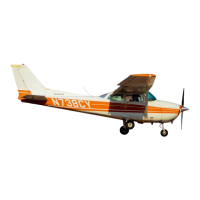CESSNA SEC1-ION 7
MODEL 182T NAV
Ill
AIRPLANE AND SYSTEMS DESCRIPTION
AVIONICS SUPPORT EQUIPMENT
(Continued)
12V
POWER OUTLET
A power converter located on the cabin side of the firewall, forward
of the right instrument panel, reduces the aircraft's 28 VDC power to
12 VDC. This converter provides up to 10 amps of power to operate
I
portable devices such as notebook computers and audio players.
The power output connector (POWER OUTLET 12V -10A) is located
on the center pedestal (refer to Figure 7-2).
For airplanes 18281742 and On, a second power outlet
conned
(POWER OUTLET 12V
-
10A) is located in the right sidewall by tl
aft passenger seat. A switch located on the switch panel labelc
"CABIN PWR 12V" controls the operation of the power outlets.
NOTE
Charging of lithium batteries may cause the lithium
batteries to explode.
Take care to observe the manufacturer's power
requirements prior to plugging any device into the
12 volt Cabin Power System connector.
This
system is limited to a maximum of 10 amps, or if
equipped with two connectors 10 amps total.
Use caution with powedadapter cables in the cabin
to avoid entangling occupants or cabin furnishings
and to prevent damage to cables supplying live
electric current.
Disconnect powerladapter cables when not in use
STATIC DISCHARGERS
Static wicks (static dischargers) are installed at various points
throughout the airframe to reduce interference from precipitation
static. Under some severe static conditions, loss of radio signals is
possible even with static dischargers installed. Whenever possible,
avoid known severe precipitation areas to prevent loss of
dependable radio signals. If avoidance is impractical, minimize
airspeed and anticipate temporary loss of radio signals while in
these areas.
Static dischargers lose their effectiveness with age, and therefore,
should be checked periodically (at least at every annual inspection)
by a qualified technician.
11 82TPHAUS-04 U.S. 7-73

